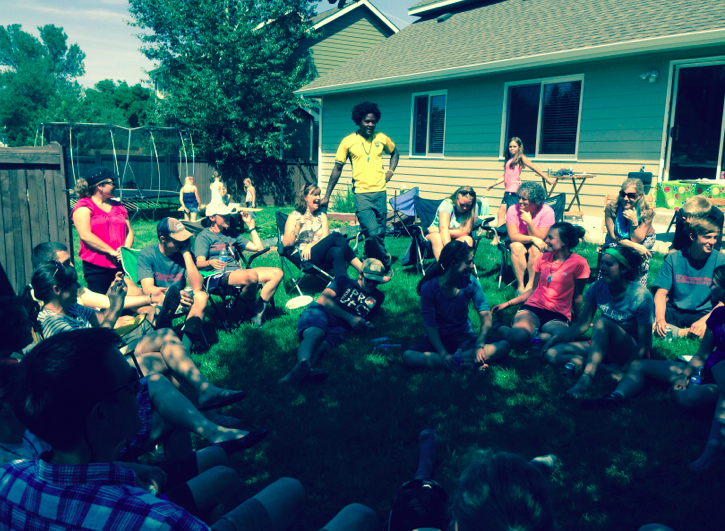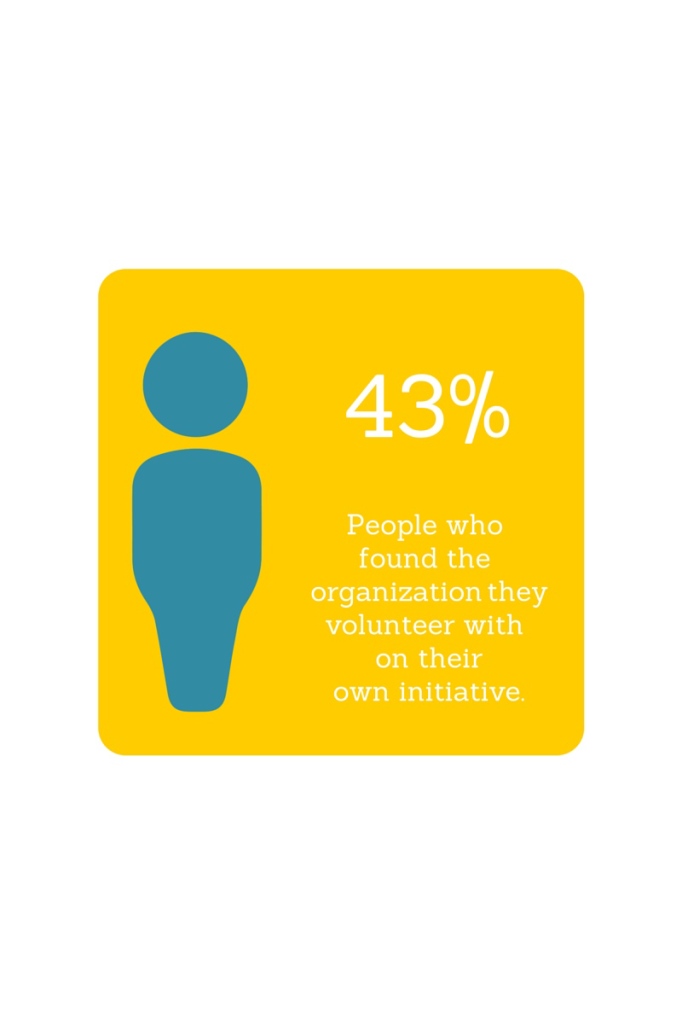Non profits and churches depend on volunteers. A non-profit organization without a growing community of volunteers is like a ranch without enough ranch hands. Things break down and eventually the ranch goes belly up. A great vision or cause gets a non-profit started or a church planted, but without teams of healthy, motivated, volunteers to help, you will likely not go the distance. To finish what you have started you need a steady stream of volunteers joining in and remaining on board.
Volunteers freely offer to undertake a task. They want to do what they are doing or they wouldn’t be doing it. So can you recruit and retain more volunteers for your mission? Here’s how…
In your garden you might see some “volunteer” plants shooting up because a seed fell to the ground found some good soil to grow in. That’s just what seeds do when they find good soil. A volunteer plant is one that is not deliberately planted. But because you nurtured the soil to have the capacity to support growth, some “volunteers” sprout up. I find this to be the case with churches and non-profits that do a spectacular job of creating the soil to support robust initiatives to recruit, train, and send volunteers out in teams to accomplish their mission. If you can figure out how to create an environment in your organization that has the capacity to support a growing team of volunteers, you will see catalytic growth to achieve your goals. It’s just the way God has designed community.
There has been much talk in recent years about the decline in volunteerism. I hear this primarily in North America and Europe. Yet, a recent study reveals some good news for non-profits. Generation Xers are volunteering more as of the last few years, and Generation X (ages 34-54) has the highest volunteer rate of any age group.
They are ready to volunteer if you can provide the soil for them to flourish.
WE WANT TO VOLUNTEER BECAUSE WE ARE CREATED IN THE IMAGE OF GOD
People want to help others because each of us is created in the image of God, and God values helping those who are in need. Most non-profits exist because people share our Creator’s desire to help others. Secular-minded people may deny this is the reason why they are drawn to volunteer their time, but there is no other explanation for this intrinsic value for volunteerism. The Apostle Paul expressed this by quoting one of Jesus’ sayings:
In everything I did, I showed you that by this kind of hard work we must help the weak, remembering the words the Lord Jesus himself said: ‘It is more blessed to give than to receive.’ (Acts 20:35)
WINDMILLS AND VOLUNTEERS
People generally want to help others. And those who embark on the journey of life-long volunteerism discover that they receive way more benefits from giving than receiving. We are designed by God to give of our time, talent, and resources. In the same way that a windmill is designed to pump water or create electricity, people are designed to volunteer of themselves for the sake of others. We are designed for this purpose. For a windmill to just spin its sails and not pump water or create electricity doesn’t make sense. It would be a waste of a perfectly good windmill. Although it would be nice to look at, it would not be fulfilling its purpose. In the same way, a person cruising through life, active yet not serving others is like a windmill that doesn’t pump or create energy.
8 WAYS TO RECRUIT AND RETAIN VOLUNTEERS TO ACCOMPLISH YOUR MISSION
If you have been given the opportunity to work with volunteers, I’d like to share 8 suggestions to help you have success in both recruiting and retaining a highly committed volunteer team:
1. Help Your Volunteers Maintain a Proper Motivation for Serving. The Reward is Relationships.
Sometimes because of our need for feedback, volunteers wander toward wrong motivations for serving. They start working for the wrong rewards: to be noticed, to gain significance, to feel powerful, or to be recognized for our efforts. You need to continually remind volunteers in your church or organizations that the real reward is the relationships. Both our relationship with God is deepened as we fulfill our design by serving and helping others, and we also enjoy the reward of incredible relationships with those we serve. If volunteers wander into wrong motivations they become vulnerable, and like a vine without water, they dry up. You’ve lost them at that point.
RELATED: Burned Out? Ministry Longevity Depends on Proper Motivation
2. Directors of Volunteers or Team Leaders Need to Give 80% of their Energy to Relationships with their Volunteers, not their Target Audience:
Someone needs to fill the tank of your volunteer work force. They are pouring into others, and the directors or team leaders need to spend 80% of their energy tending to the volunteers rather than giving most of their time to the target audience. For example, if you are a youth pastor and you have 30 volunteers who are investing in kids. You should only be spending 20% of your time with kids, and you need to invest 80% of your time encouraging, equipping, and empowering your volunteer leaders. You could decide to choose another model and invest 80% of your time in your target audience, but realize that you won’t be able to grow very much. This is because you will have chosen a model of growth by addition, versus growth by multiplication.
RELATED: Empowerment: 8 Ways You Can Increase Someone’s Potential
3. Emphasize the Importance of Giving Financially to the Cause in Addition to their Time.
You may be tempted to believe that because your volunteers are giving so much of their time to your cause or ministry that you shouldn’t burden them by asking or inviting them to give generously of their finances. This is exactly the opposite of reality. In fact, Jesus spoke about this directly:
For where your treasure is, there your heart will be also. (Luke 12:34)
Giving is not a burden. It is a gift. To give generously and sacrificially to serve other people enlarges our heart and fills us with joy and freedom that can only be found through generous giving. And as your volunteers are invited to give generously they will have more ownership of your mission and the quality and excellence of everything you do will heighten. If you want to enlarge the scope of your organizations impact, invite your volunteers to give financially, and watch how everyone benefits from this culture of giving.
4. Set a High Standard. Have High Expectations of People and an Off-the-Charts Commitment to Empower them…
Strong committed leaders are drawn to something that is worth their time. They want to be invested in something they can be proud to tell others they are involved in. The most capable and catalytic leaders in your community will be drawn to an organization that upholds the highest standards of excellence.
5. Offer as Much Training as Possible. More Training than Most Everyone Else.
You are asking a lot of your volunteers. And they are going to benefit from the level of excellence in your leadership culture. But to keep the soil of your non-profit at high capacity to support a growing team of volunteers, you need to stay two or three steps ahead of them. The best way to do this is to spend part of your 80% of time you have set aside to invest in your volunteers to research and implement new leadership development training and resources. You will not regret a minute or a dollar you spend on offering the best training to your volunteers.
Research on North American volunteerism in 2013 discovered that people who volunteer are usually involved in 1-2 organizations. 71.3% of people are involved in one organization, and 19% are involved in two or more. This research also found that individuals with a higher education were more likely to volunteer for multiple organizations than were those with less education. This means that the best volunteer leaders that will align with your organization will likely have expectations for “continuing education.”
6. Understand Demographics… Who is Most Likely to Volunteer?
Volunteerism among demographic groups in North America looks like this:
- 35- to 44-year-olds were most likely to volunteer (30.6 percent).
- Volunteer rates were lowest among 20- to 24-year-olds (18.5 percent).
- 45+ the volunteer rate tapered off as age increased.
- Teenagers (16- to 19-year-olds) had a volunteer rate of 26.2 percent.
- Individuals with higher levels of education engaged in volunteer activities at higher rates
than did those with less education.
7. Recruit and Ask People Directly to Help You. Don’t Wait for them to Find You.
The same study reveals how volunteers became involved in the organization they serve:
About 40.8 percent of volunteers became involved with their main organization after being asked to volunteer, most often by someone in the organization.
8. Demonstrate Excellence in Your Communication, Marketing, and Social Media.
Some people on their own initiative will find you if you have a good reputation and your organization has a strong, credible presence. About 43% of people who volunteer find the organization themselves. This means that it is worth time and resources to maintain excellent communication, marketing and social media.


